Brown University’s dedication to fostering diversity, equity, and inclusion throughout all university life is evident from the Diversity and Inclusion Action Plan (DIAP). This strategic plan is a fundamental blueprint aimed at cultivating and maintaining a diverse and inclusive community, which is crucial for the progress of knowledge, learning, and discovery. The plan’s strengths lie in its well-defined objectives, which entail the University community in reaching these goals, and a strong emphasis on accountability. The objective of DIAP is to create an atmosphere where every member of the Brown community—regardless of race, ethnicity, gender, sexual orientation, nationality, religion, political views, physical ability, and other identity aspects—feels valued, accepted, and is given equal opportunities to succeed. It is imperative for the Brown community to collaboratively ensure that the University lives up to its ideals of diversity and inclusion.
Shaping the DIAP: Engaging the Brown Community
The campus saw significant activism regarding racial issues at Brown and across the United States in 2015 which coincided with the planned release of the DIAP in the fall of the same year. On March 30, 2021, the University introduced DIAP Phase II, marking five years since the original plan’s adoption. This new document reaffirms the goals set out in the initial DIAP. To ensure that Brown can fulfill its mission to advance knowledge, all University community members are called upon to strengthen an inclusive campus community. Departments and offices must provide an annual update on progress toward their goals after the academic year.
The DIAP & DIAP Phase II prioritize actions in six areas.
-
People — identifying, recruiting, and retaining students, faculty, and staff from groups that have been historically underrepresented in higher education.
Progress– A significant initiative is a conference to support graduate student women in STEM, which was rebranded in 2018 as the Womxn in STEM Symposium (WiSTEM) to be more inclusive of trans and nonbinary women. Additionally, the Faculty of Color Network was launched in the fall of 2015. As a result of these and other initiatives, Brown has seen an increase in the proportion of graduate students from historically underrepresented groups, rising from about 9% in the fall of 2014 to just over 16% in the fall of 2020.
-
Academic Excellence — creating a learning environment in which students from all backgrounds can thrive in their chosen fields of study; providing scholarly resources to support education and leading-edge research; and sustaining the University’s commitment to the highest standards of research and teaching.
Progress- Launched in 2016, The Native American and Indigenous Studies Initiative creates a dedicated space for education and collaboration on issues vital to Indigenous communities in Rhode Island and globally. Faculty members offer courses on various topics, including American Indian historical and contemporary lifeways, the history of contact between European and Native peoples, environmental health and research in Native communities, the histories and cultures of Central and South American Indigenous peoples, Indigenous knowledge and the sciences, and Native American religion, literature, and media. In fall 2019, this initiative received a grant from the Andrew W. Mellon Foundation to support the development of an undergraduate concentration in Native American and Indigenous Studies.
Also Read- Student Life at Brown University
-
Curriculum — reforming, expanding, and developing courses, seminars, and other learning opportunities around diversity, inclusion, and related topics.
Progress- Both individual and team Undergraduate Teaching and Research Awards (UTRAs) have been expanded to specifically reach out to historically underrepresented groups (HUG) students, first- and second-year students, and women in STEM fields. The BrownConnect mentoring and internship program has also enhanced its engagement with low-income students and those from historically underrepresented groups, providing more internship opportunities. In DIAP Phase II, Brown is prioritizing the creation of more opportunities for the University community to engage with issues of diversity, equity, and inclusion throughout the curriculum.
-
Community — creating a community that works actively to counteract inequity and injustice and that promotes an attitude of mutual respect.
Progress: The Division of Campus Life has continued to invest in programming, space, and staffing for various student centers, including the Brown Center for Students of Color, the Undocumented, First-Generation College, and Low-Income Student Center (U-FLi Center), the Global Brown Center for International Students, the LGBTQ Center, and the Sarah Doyle Women’s Center. Additionally, support has been expanded for the Student Activities Office and the Office of Military-Affiliated Students.
-
Knowledge — collecting and sharing data to benchmark and measure progress.
Progress- To enhance data collection and transparency, Brown’s Office of Institutional Research created the Diversity Dashboard, which allows users to search data by race/ethnicity and academic fields. The Brown University is committed to developing evidence-based initiatives in response to the climate survey data.
-
Accountability — ensuring the steps outlined in the DIAP are carried out
Progress- The Diversity and Inclusion Oversight Board, consisting of students, faculty, and staff, convenes monthly to assess and discuss progress toward the goals outlined in the DIAP.Annually, the board presents its findings to Brown’s president and provost through a public memo. The president and provost then address any concerns raised regarding advancements in diversity and inclusion goals with the broader community. Since 2017, the Office of Institutional Equity and Diversity has released an annual DIAP report. This report comprehensively outlines data, activities, programs, and initiatives contributing to the realization of DIAP objectives.
At Brown, all academic and administrative departments and centers are mandated to develop multi-year plans for diversity and inclusion. These Departmental Diversity and Inclusion Action Plans are reviewed annually to monitor progress on established goals and actions.
About the DIAP | Diversity & Inclusion Action Plan | Brown University)
Researching Brown’s diversity plan allows prospective students to make informed decisions about whether the university is the right academic and social environment for them to thrive and contribute positively to a diverse community.
We can help you with your college application process. Working with study abroad consultants, overseas education consultants, or, as more commonly known, college counselors, can help you plan and make those high school years count. Ivy Central offers exceptional focus to help you prepare for college admissions throughout the high school years. Start today!








